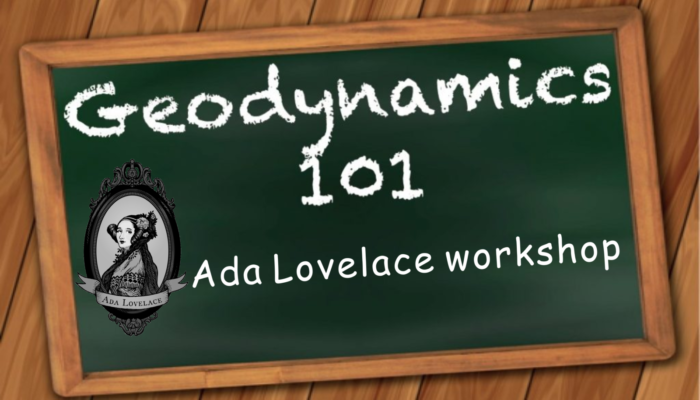Mantle flow and deformation beneath tectonic plates
Geodynamics
101 about Ada Lovelace Workshop on Modelling of Mantle and Lithosphere Dynamics
2022 Ada Lovelace Workshop on Numerical Modelling of Mantle and Lithosphere Dynamics is finally coming! Have you got started packing for travelling to Hungary? I got you something to read about on your way to the workshop. Who is Ada Lovelace? The workshop, previously known as the ‘International Workshops on Mantle and Lithosphere Dynamics’, was renamed in 2018 by the EGU Topical Events Committee ...[Read More]
Geodynamics
The Sassy Scientist – Proposing Stardom
Whether you’re just starting out in academia or have been around the block a few times so speak, setting out a new proposal is daunting. Whether it’s coming up with the research topic or fieldwork idea, figuring out how to get the support you need or submitting it to whoever you need approval from, none of it is easy. That’s why Jasper has asked us: What is the secret for an amaz ...[Read More]
Geochemistry, Mineralogy, Petrology & Volcanology
Is garnet going to be your best date?
For geochronologists it is all about precision and accuracy. For petrochronologists it is more about precise positioning of those ages to trace back the evolution of a rock. For many, it is not just about getting a crystallisation or metamorphic age, it is about knowing when and at what conditions a given rock experienced certain petrogenetic processes. As we progressed from geochronology to petro ...[Read More]
Tectonics and Structural Geology
TS Must Read – Spatio-temporal evolution of strain accumulation derived from multi-scale observations of Late Jurassic rifting in the northern North Sea: A critical test of models for lithospheric extension, Cowie et al. (2005)
Cowie et al. (2005) is an exciting “must-read” for any geologist interested in rift systems. It examines strain accumulation and extension within a rift basin and scrutinizes model predictions with field observations. The authors highlight two sets of models, the first set of models uses brittle deformation to explain extension (e.g., King et al., 1988; Kusznir et al., 1991; Ter Voorde et al., 199 ...[Read More]
Soil System Sciences
Feels like the first time at the EGU…#2
After a couple of years of online conferences, Early Career Scientists of the EGU’s Soils System Sciences division share their experiences of this year’s General Assembly which was held in a hybrid format. This week, we hear from Marta Basso I started doing research let’s say out of the blue, I have never been to a conference during my studies, so when I started my PhD in 2019 I ...[Read More]
Geodynamics
The Sassy Scientist – Geolidays
Recently, we’ve been discussing how you can fit a holiday into your busy schedule. But once you’ve found the time to take a few days off you then have to decide where to go. This can be almost as challenging, which is why Simone has asked me: What are the best holiday destinations for a geodynamicist? Dear Simone, Excellent question! There’s nothing worse than putting all the effort into organisin ...[Read More]
Tectonics and Structural Geology
TS Must read – Wortel and Spakman (2000), Subduction and slab detachment in the Mediterranean-Carpathian region
The must read paper Wortel & Spakman (2000) uses seismic tomography models showing the three-dimensional upper mantle velocity structure of the Mediterranean-Carpathian region to hypothesize lithospheric processes related to slab detachment, and particularly, the lateral migration of the detachment along plate boundaries (Fig. 1). The paper defends that this process is a key control in the lit ...[Read More]
Geodynamics
Notes on: ‘Notes From Deep Time’ by Helen Gordon
This week one of our editor’s, Aisling Dunn, brings back the book reviews, talking through her thoughts on her most recent read and why she recommends you all read it too. There’s no doubt about it – I am a self-confessed book lover. Whether its fantasy stories about imagined worlds, classic tales set in 19th century England, travel writing, historical non-fiction, biographies, there are ver ...[Read More]
Climate: Past, Present & Future
EGU Climate Division presents: Outreach Team 2022 edition
European Geoscience Union (EGU) is an organisation made of different disciplines in geosciences, and each disciplines have their own Division. Within each Division, there are many different volunteered positions. Each year at the EGU General Assembly (a conference), Division members come together to nominate members for those positions. There are variety of positions from President and Deputy Pres ...[Read More]





